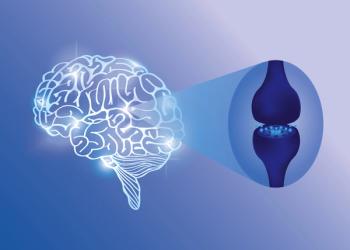
Psychodynamic-Oriented Group Therapy: A Pathway to Connection
For this psychiatrist, group therapy has proved to be an extraordinarily effective treatment for a range of mental disorders.
I am a passionate advocate for group therapy. In nearly 5 decades as a psychoanalytically trained psychiatrist, I have found it to be an extraordinarily effective treatment for addictive disorders. It is equally beneficial in treating persons with a range of other disorders and distresses. I periodically jest that I turned in my psychoanalytic couch several years ago for a loveseat to better lend my office to group therapy.
In my experience, a psychodynamically grounded group
CASE VIGNETTE
Glen* is a 42-year-old, successful businessman. On first meeting, he appears nonchalant. Yet, once engaged in conversation he is remarkably engaging and his keen analytical and admittedly critical mind are soon apparent.
The impetus for his seeking psychiatric treatment 8 years ago was the onset of panic attacks that responded to benzodiazepines and an SSRI. Glen had been in ongoing and intermittent supportive psychotherapy since then, but he resisted periodic recommendations for more intensive individual and/or group psychotherapy.
He and his siblings had been beaten as children by their father, while their mother stood by passively. His trauma history is complicated by ambivalence towards his father who sacrificed to provide for his family and assure that Glen and his siblings had a good education.
Glen disclosed that he was disdainful not only of strangers but members of his family as well. He felt little or no emotional connection to his 2 daughters, but enjoyed being with his 6-year-old son. He revealed that a beloved aunt was dying but he would not be troubled in the slightest when she died. Somewhat hesitantly, he suggested that he might even react that way if his wife were to die.
Eventually, Glen agreed to attend group therapy. Convinced that unresolved relationship issues could tragically cause him much unhappiness, he consented to join my group. I felt little headway was being made to understand or modify his puzzling (and I suspected painful) emotional detachment-when I thought a good connection was developing among the members, I asked Glen if he would feel bad if I died. With little hesitation he matter-of-factly said he didn’t think he would. Telling Glen that his panic, anxiety, and tension were related to his need to cut himself off from his feelings produced little effect.
After some time, Glen had a breakthrough. During a session, group members were discussing how a recent member, Peter,* dropped out shortly after joining. The conversation about Peter’s leaving prompted an exchange among group members about their abusive and traumatic experiences at the hands of cruel and neglectful parents. Some members admitted they had not connected with Peter. Glen in particular expressed his dislike.
Animatedly and enthusiastically, and with little warning, he effusively contrasted his reaction to Peter with his own behavior. He said, “I haven’t felt that [detachment] with any of you.” Without pause he added, “I like all of you and I feel I can say anything here and it feels safe.” Then he added, “I feel better and more comfortable when I come to group.”
A week later he offered, “It was not a great ‘ah hah! moment,’ but I had the longest talk with my older daughter this morning, more than I have had with her in a year-she’s a neat kid.” I interjected that perhaps he had wished it had been that way with his father. He quickly responded by saying, “If I thought about that for very long, I would want to kill him.”
*names changed
Benefits of group therapy
Yalom and Leszcz1 describe the rich affective and interpersonal therapeutic factors in groups that help patients to understand and work out their pain and characteristic ways of being. Their approach is consistent with modified dynamic group therapy (MDGT) for patients with substance use disorders.2
In classical psychodynamic group therapies, the techniques are more strictly interpretive about characteristic defenses and transference reactions of the members towards the group leader and each other, or, interactions are interpreted about the group as a whole with an emphasis on group concerns rather than those of the individual. In contrast, MDGT follows the supportive-expressive tradition that emphasizes “fostering trust and connection among the members and the leader, and a high priority is placed on maintaining an atmosphere of safety and comfort in which characteristic and self-defeating ways of seeing oneself [and in the case of Glen, seeing others] are enacted and examined.”(2,p2)
Glen’s reactions from such a perspective can be seen less as involving defenses of repression or suppression but are more in the nature of the “vertical splitting,” whereby disavowed parts of the self are walled off.4,5 As Glen rather quickly figured out, the friendly, relaxed, and engaging elements of the group functioned to unlock the softer, caring, and more trusting parts of himself, as well as the walled-off rage of childhood trauma.
References:
References1. Yalom I, Leszcz M. The Theory and Practice of Group Psychotherapy. New York: Basic Books; 2005.
2. Khantzian EJ, Halliday KS, McAuliffe WE. Addiction and the Vulnerable Self: Modified Dynamic Group Therapy for Substance Abusers. New York and London: Guilford Press; 1990.
3. Luborsky, L. Principles of Psychoanalytic Psychotherapy: A Manual for Supportive-Expressive Treatment. New York: Basic Books; 1984.
4. Siegel AM. Heinz Kohut and the Psychology of the Self. London: Routledge; 1996.
5. Goldberg A, Ed. Errant Selves: A Casebook of Misbehavior.Hilsdale, NJ: The Analytic Press; 2000.
Newsletter
Receive trusted psychiatric news, expert analysis, and clinical insights — subscribe today to support your practice and your patients.















